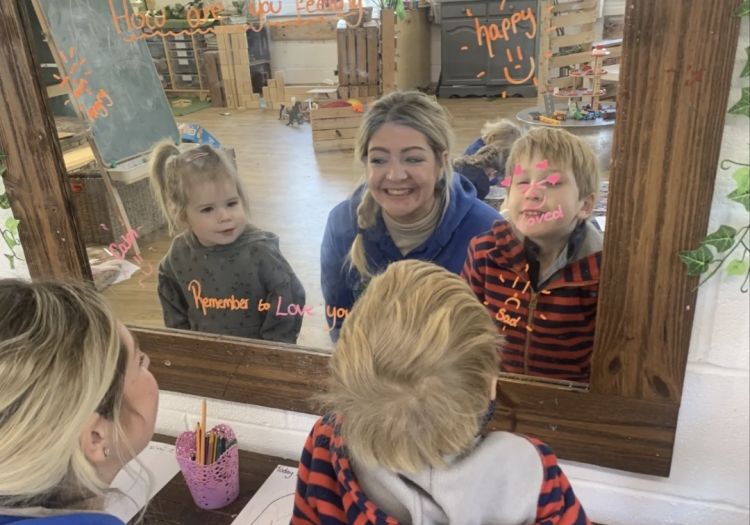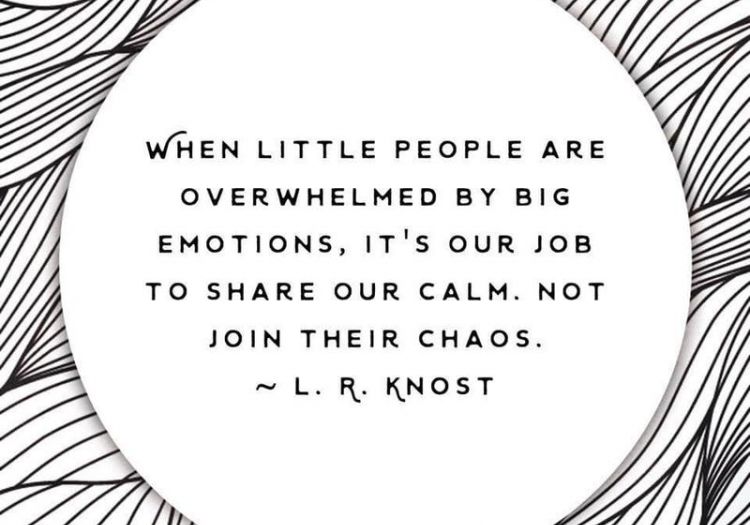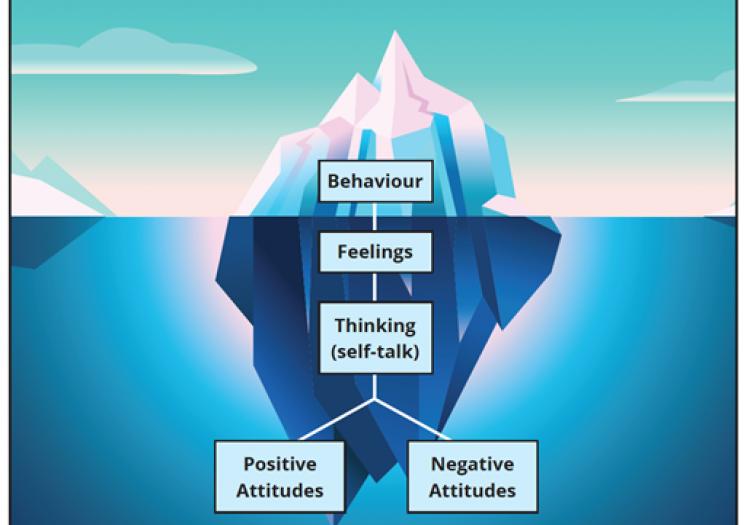Self-Regulation Blog
A blog explaining self-regulation and how we can support young children with this.
I’m Kitty, the Toddler Room Leader. My biggest passion lies within children’s mental health and I work every day to provide our children with the skills they need for a happy future.
What is Self-Regulation?
Self-regulation is the technical term for the ability to recognise, manage and understand your own emotions and behaviours. It is not something we are born with, but through co-regulation with a secure attachment, we are able to build up these skills and create our own self-regulation toolbox.
Why is Self-Regulation important?
Without the ability to self-regulate, we would become adults without any impulse control; we would become angry or sad over the smallest things. You know the saying, ‘Don’t cry over spilt milk’, it seems silly to us as fully formed adults, however to children who have not developed self-regulation skills yet, it truly is a disaster.
Similarly, children’s tolerance is much smaller than adults. Imagine you wake up on a Saturday, craving a full English breakfast, you want beans, you want hash browns, you want bacon and sausage. So you jump up and get dressed, you notice the tag in your top is annoying you a little bit but quickly move on. On your way down the stairs you trip on the dog, you are fine, but that was annoying. You make it to the kitchen, that yummy breakfast is coming, you have popped the kettle on, opened the fridge, no bacon. Never mind, you still have sausages, you turn on the extractor fan whilst they cook. You finally get the breakfast cooked, but by the time you sit to eat it, you don’t want it as much as you did.
-The tag in your top was annoying.
-You tripped over the dog.
-You didn’t have any bacon.
-The kettle is whistling.
-The extractor fan is whirring.
-Your tag is STILL annoying you.
But, you cope. It’s fine. It’s not the end of the world.
However, for children who haven’t yet built up their self-regulation toolbox, they probably wouldn’t make it passed the itchy tag.
For your child, it’s not a full English breakfast they’re craving, it’s Saturday morning and they’ve woke up SO SO excited about their favourite paw patrol plate. They’re dressed by their parent, the tag is itching them but they were told its fine. The dog's running around, they make it down stairs for breakfast, and are handed a Peppa Pig plate. Cue tears, screaming and a full meltdown. It’s just the wrong plate, right?
-They were woken up by someone else.
-They were dressed by someone else.
-The tag was itching them, however this feeling was dismissed.
-The dog running around is very overstimulating.
-The smell of the toast is trigging a sensory response.
-Then finally, no beloved paw patrol plate.
On the surface, the child is crying over a plate, which seems ridiculous and trivial. However, looking further into this incident, its not the plate at all, the plate was just what tipped them over. They’re feeling all sorts of sensory overwhelm from the tag, the dog, the smells and the sounds. They’re not in control of anything in their life. Their bedtime and wake time are chosen for them; their clothes are chosen for them; all they wanted to choose was their plate.
This is why building self-regulation skills are important.
How can we support children to build self-regulation skills?
Every second you spend with your child is an opportunity to teach them the skills they can later use themselves, this is called co-regulation. Co-regulating with your child, talking them through their experiences or preparing them for possible events, is the best way to help children self-regulate.
Name their feelings
‘I can see you are sad, would you like to have a cuddle?’
Set, and stick to, boundaries
‘I know you are so excited to play with your car, and you feel cross that you can’t, but we don’t have toys at the dinner table.’
Give them a choice
‘Why don’t you choose a safe place for the car whilst we eat, do you think it would be best on the sofa, or on the shelf?’
Make it fun
‘Shall we walk over there or jump?’
Tell them what to do, not what not to do.
Young children only pick up on the last word you say, you say, ‘No jumping on the sofa!’ and what do they do? They jump on the sofa. Children respond much better to positive language than negative language.
Instead of, ‘No jumping on the sofa!’, try ‘bums on seats’, or, ‘feet on floor.’
Furthermore, in this situation, a child wanting to jump on the sofa is probably seeking some sensory feedback, instead of stifling this (which will result in further unwanted behaviour later), provide them with somewhere that they can jump. Do you have a trampoline? Some soft play pieces? Where these resources aren’t available to you, simply putting the sofa cushions on the floor works!
Teach them the words they need to say
Instead of, ‘No hitting’, say- 'stop, no, I don’t like that’’.
Instead of, ‘Stop shouting’, say- ‘Please use your quiet voice' or ‘Listen please?’.
Hold your boundaries
If your child is shouting at you, maybe hitting, or throwing a toy, and they haven’t responded to your redirection. Set and hold your boundary.
‘If you continue to hit mummy/daddy/grandma/baba, I will have to put you down until you are ready to use your gentle hands’.
‘If you continue to throw your toy, I will have to take it away.’
Most importantly, make sure you follow through.
If you take their toy away, they may cry and meltdown, the co-regulation continues.
Sit with them, and name their feelings, ‘I can see you are sad, would you like a cuddle?’
Once they have calmed down you can talk about the situation, if you jump in too soon with, ‘Well you can’t throw toys its dangerous’ etc etc, they’re not going to hear a word. They are currently in fight, flight or freeze.
Wait with them, demonstrating some breathing exercises or using a calming toy, until they are ready.
Once they have calmed, reiterate the boundary and the consequence, ‘Throwing the cars is dangerous, it could hurt me/sibling/pet, so the car has to go away now.’
Then, move on.
‘Why don’t we go and read a story/play with the playdough/have a snack?’
Children aren’t able to work through these situations alone, they need your support. They need our support.
Every child is different; they respond differently and love to surprise us. Try out some of these techniques but most important of all, is making sure the children know they are loved. Even on those days that they’re making you tear your hair out.



